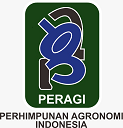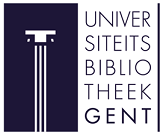Implementasi Kultur Teknis di Perkebunan Kelapa Sawit Rakyat dalam Menghadapi Dampak Perubahan Iklim
Abstract
Produktivitas perkebunan kelapa sawit rakyat rendah dan upaya peningkatannya menghadapi tantangan yang semakin besar dengan meningkatkatnya dampak negatif perubahan iklim. Penelitian ini bertujuan mengetahui komponen kultur teknis manajemen konservasi tanah dan air dan tingkat penerapannya antara petani plasma dan petani swadaya. Purposive sampling dipergunakan untuk menentukan responden petani yang berasal dari petani plasma (satu kelompok tani) dan petani swadaya (dua kelompok tani) dengan kelapa sawit yang ditanam tahun 2009-2011. Penelitian dilaksanakan di Desa Laburan, Kabupaten Paser, Kalimantan Timur. Hasil penelitian dianalisis secara deskriptif. Hasil penelitian menunjukkan bahwa petani telah menerapkan kultur teknis kebun yang adaptif untuk menghadapi resiko kekeringan dan banjir. Kultur teknis tersebut berkenaan dengan manajemen gulma dan vegetasi bawah; pemupukan dan menajemen tajuk (pruning); pemanfaatan pelepah yang dipruning dan tandan kosong sebagai mulsa dan sumber bahan organik; siklus panen tandan buah; manajemen kebakaran; dan integrasi tanaman selama TBM dan TM awal kelapa sawit. Umumnya ramam kultur teknis tersebut lebih banyak diterapkan oleh petani plasma yang selama ini memperoleh bimbingan dan bantuan teknis dari perusahaan inti daripada petani swadaya yang didampingi secara terbatas oleh penyuluh ataupun pedagang perantara (toke).
Keywords
Full Text:
PDFReferences
A, A., Mohd, Y., & Abdullah, A. (2021). Oil palm in the face of climate change: a review of recommendations. International Conference on Civil and Environmental Engineering, 1–10. https://doi.org/DOI:10.1088/1755-1315/646/1/012065
Ahmed, A., Mohd, Y. B. I., & Abdullah, A. M. (2021). Oil palm in the face of climate change: a review of recommendations. International Conference on Civil and Environmental Engineering, 1–10. https://doi.org/10.1088/1755-1315/646/1/012065
Chew, C. L., Ng, C. Y., Hong, W. O., Wu, T. Y., Lee, Y. Y., Low, L. ., Kong, P. S., & Chan, E. S. (2021). Improving Sustainability of Palm Oil Production by Increasing Oil Extraction Rate : a Review. Food and Bioprocess Technology, 14, 573–586.
Corley, R. H. ., & P.B. Tinker. (2016). The Oil Palm. Wiley Blackwell.
Dislich, C., Keyel, A. C., Salecker, J., Meyer, Y., Auliya, K. M., & Wiegand, M. K. (2017). A review of the ecosystem functions in oil palm plantations, using forests as a reference system. Biological Reviews of the Cambridge Philosophical Society, 49, 1539–1569. https://doi.org/DOI: 10.1111/brv.12295
Hastuti, P. B., Wilisiani, F., Gunawan, S., Lumban Gaol, J. L., & Setyawan, H. (2022). Effect of Rhizobacteria and Palm Mill Byproducts on the Growth of Oil Palm Seedlings in a Pre-Nursery. KnE Life Sciences, 2022, 319–327. https://doi.org/10.18502/kls.v7i3.11133
Helviani, H., Kasmin, M. O., Juliatmaja, A. W., Nursalam, N., & Syahrir, H. (2021). Persepsi Masyarakat terhadap Dampak Perkebunan Kelapa Sawit PT. Damai Jaya Lestari di Kecamatan Tanggetada Kabupaten Kolaka, Sulawesi Tenggara, Indonesia. Agro Bali : Agricultural Journal, 4(3), 467–479. https://doi.org/10.37637/ab.v4i3.773
Iqbal, R., Raza, M. A. S., Valipour, M., Saleem, M. F., Zaheer, M. S., Ahmad, S., Toleikiene, M., Haider, I., Aslam, M. U., & Nazar, M. A. (2020). Potential agricultural and environmental benefits of mulches-a review. Bulletin of the National Research Centre, 44, 1–16. https://doi.org/doi: 10.1186/s42269-020-00290-3.
Khasanah, N., van Noordwijk, M., Slingerland, M., Sofiyudin, M., Stomph, D., Migeon, A. F., & Hairiah, K. (2020). Oil palm agroforestry can achieve economic and environmental gains as indicated by multifunctional land equivalent ratios. Front Sustain Food Syst., 1–13.
Lahsen, M., R., S.-R., P.R., L., P., D., R., L., O., G., M., M., P., P., B., O.-E., & M.S., S. (2010). Impacts, adaptation and vulnerability to global environmental change: challenges and pathways for an action-oriented research agenda for middle-income and low-income countries. Curr Opin Environ Sustain, 2, 364–374.
Mohsen, B., Christopher, T. B. S., Husni, M. H. A., & Zaharah, A. R. (2014). Soil, nutrients and water conservation practices in oil palm plantations on sloping and steep lands in Malaysia. International Agriculture Congress. https://doi.org/DOI:10.13140/RG.2.1.4396.1842
Nabara, I. S., & Man, N. (2018). The role of extension in activity-based adaptation strategies towards climate impact among oil palm smallholders in Malaysia : a systematic review. J Agric Vet Sci, 11, 37–44. https://doi.org/DOI:10.9790/2380-1108013744
Paterson, R. R. M., Kumar, L., Shabani, F., & Lima, N. (2017). World climate suitability projections to 2050 and 2100 for growing oil palm. J Agric Sci, 155(5), 659–702. https://doi.org/https://doi.org/10.1002/ece3.3610
Rao, T., & Mustapa, S. I. (2020). A review of climate economic models in Malaysia. Sustain, 13, 1–20. https://doi.org/10.3390/su13010325
Rival, A. (2017). Breeding the oil palm (Elaeis guineensis Jacq.) for climate change. OCL, 24(1). https://doi.org/10.1051/ocl/2017001
Ruslan, K. A. C., & Hamdani, M. S. A. (2021). Integrated weed management programs at aoil palm plantation-A Survey. International Journal of Agriculture, Forestry and Plantation, 11, 32–38.
Sarkar, M. S. K., Begum, R. A., & Pereira, J. J. (2020). Impacts of climate change on oil palm production in Malaysia. Environ Sci Pollut Res, 27, 9760– 9770. https://doi.org/https://doi.org/10.1007/s11356-020-07601-1
Setyawan, H., Rohmiyati, S. M., & Purba, J. H. (2020). Application of Cow Manure, Urea and NPK Fertilizer Combination on the Growth of Palm Oil (Elaeis Guineensis Jacq) in Pre-Nursery. Agro Bali : Agricultural Journal, 3(1), 74–83. https://doi.org/10.37637/ab.v3i1.419
Shanmuganathan, S., Narayanan, A., & Mohamed, M. (2014). A hybrid approach to modelling the climate change effects on Malaysia’s oil palm yield at the regional scale. In H. T., G. R., & D. M.M. (Eds.), Recent advances on soft computing and data mining (pp. 335–345). Springer.
Sung, C. T. B. (2016). Availability, use, and removal of oil palm biomass in Indonesia. Report Prepared for the International Council on Clean Transportation.
Sutarta, E. S., Santoso, H., & Yusuf, M. A. (2015). Climate change on oil palm: it’s impacts and adaptation strategies.
von Uexkull, H., Henson, I. E., & Fairhurst, T. (2003). Canopy management to Optimize Yield. In T. Fairhurst & H. R. (Eds.), Oil Palm : management for Large and Sustainable Yields. IPI.
Wahid, M. ., Weng, C. K., Choo, Y. M., & Chin, C. M. (2006). The need to reduce national greenhouse gases emissions : oil palm industry ’s role. Journal of Oil Palm Research, Special Issue-April 2006, 1–23.
Woittiez, L., van Wijk, M. T., Slingerland, M., & van Noordwijk, M. (2017). Yield gaps in oil palm : A Quantitative review of contributing factors. Europ J. Agronomy, 83, 57–77.
Zikhali, Z. M., Mafongoya, P. L., Mudhara, M., & Jiri, O. (2020). Climate change mainstreaming in extension agents training curricula: a case of Mopani and Vhembe District, Limpopo Province, South Africa. J Asian Afr Stud, 55, 44–57. https://doi.org/https://doi.org/10.1177/002190961985709
Refbacks
- There are currently no refbacks.


























